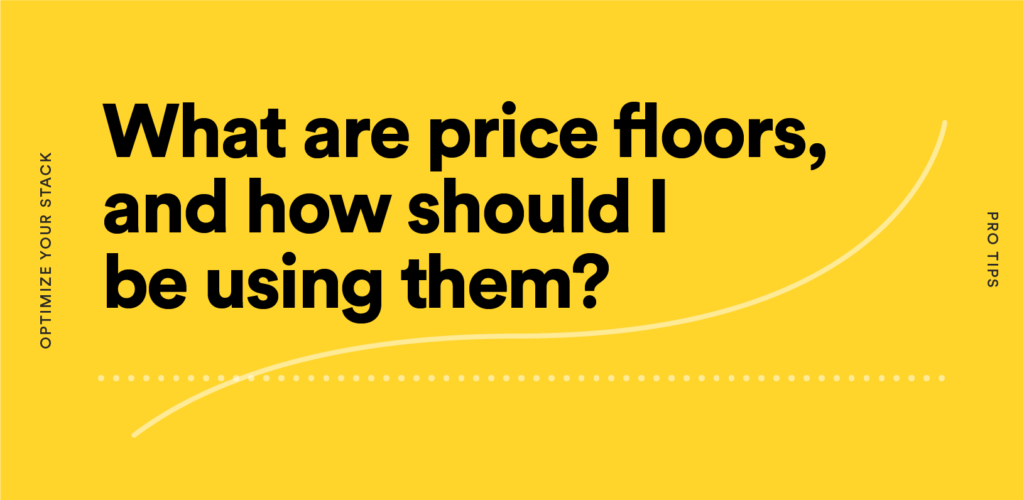What is a price floor?
If you know anything about display advertising through programmatic solutions, you know about price floors. Just in case you don’t, here’s a quick price floor definition:
A price floor is a fixed CPM rate that prevents an ad partner from serving campaigns that pay below a certain price threshold. For example, if you set your price floor to $1 your ad partner shouldn’t serve any campaigns with net CPM rates below that amount.
To be clear, a price floor is not an evaluation of your inventory, it’s simply a baseline amount that decides who gets to bid on your inventory. A higher price floor only limits the bidders who see and bid on impressions. Because Sovrn’s real-time bidding partners use price floors as a baseline for a competitive auction for publishers’ requests, it is almost always the case that the eventual CPM earned will be roughly twice the amount of the price floor. No matter the target CPM, Sovrn usually recommends a price floor below $0.50, especially when you’re just getting started.
How do price floors work?
Price floors act as if-then statements where publishers get to determine which ad campaigns are allowed to bid for each ad partner. Publishers use price floors to tier their ad partners when organizing their ad stacks.
In case you need a refresher on ad stacks, check out our blog on Ad Stack Optimization strategies.
When a publisher sets a price floor, they are effectively preventing advertisers from bidding on their inventory. The natural effect of raising a price floor is an increase in CPM. So why wouldn’t all publishers put a $10 price floor on all of their ad tags and drive CPMs through the roof? Fill Rate.
CPM and Fill Rate are the two definitive metrics for measuring your display advertising performance. No doubt about it. But don’t forget about the most important metric of all: revenue.
Revenue is by far the most important metric, and yet it gets put to the wayside by CPM and Fill. What’s that about? Most publishers get caught up around the dollar amount tied to their CPM when negotiating with potential new ad partners. CPM is super important, but the eventual combination effect of CPM and Fill is what truly matters.
Price floors and their effect on overall revenue
For example, let’s say you’re a sports blogger and you run a Colorado-local blog focused on all the cool things you can do in the Rocky Mountains.
ColoradicalCrew is currently using Google AdSense as a backfill solution with two more ad partners above them in their ad stack filling at a higher CPM. The top partner in the stack has an extremely high CPM of $5, but a low fill of 5%. ColoradicalCrew’s ad stack currently looks like this:

As you can see, the overall revenue earned is $129.50 for this particularly zone, when using 100,000 ad requests.
Now let’s see what happens when we switch that top ad partner out for a different ad partner with a lower CPM and higher Fill Rate when keeping the other two partners at the same performance metrics (still the same traffic metric):

As you can see, the total revenue for the zone increased up to $164 (that’s a 27% increase in revenue!). Hopefully what this illustrates to you is that, when we’re talking about CPM, bigger is not always better. You have to take Fill Rate into account and look at revenue as your definitive metric when measuring the success and failure of your display advertising efforts.
OK, so what do I do?
It’s always wise to revisit your floors to make sure that you’re not missing out on potential revenue. As Kara, our //Services manager suggests:
First, look at your CPMs. If they’re close to your floors, there’s a good chance you’re missing opportunities. Second, lower your floors for a 1-2 week test and compare your revenue. By lowering your price floors slightly to meet the moment, advertisers will get the chance to bid on more of your inventory.

